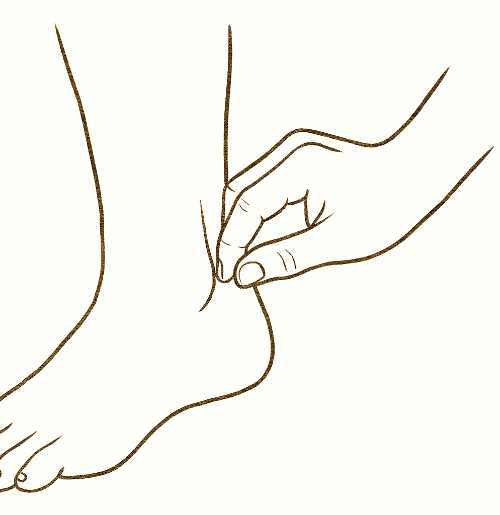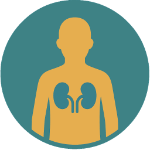Acupuncture and Acupressure for Kidney Support
Chronic Kidney Disease (CKD) requires careful medical attention, yet many people also look for complementary approaches to ease symptoms and support their overall vitality. In Traditional Chinese Medicine (TCM), acupuncture and acupressure are valuable tools for strengthening kidney energy, reducing fatigue, and promoting balance throughout the body. These therapies can be used on their own or alongside Western treatments, always under the guidance of a qualified practitioner.
Kidney Support Points
- (KI3 太溪 Tàixī) – Nourishes kidney yin and yang (illustrated above)
- (BL23 肾俞 Shènshū) – Strengthens kidney energy at the lower back
- (CV4 关元 Guānyuán) – Restores energy and essence
- Gentle pressure for 1–2 minutes with calm breathing can help ease tension and support balance
Acupuncture works by stimulating specific points along the meridians, or channels of energy, to restore harmony. For CKD, points along the Kidney and Bladder meridians are often chosen, since they directly influence kidney function. The goal is not only to support the physical organs but also to address the deeper role of the kidneys as the root of essence, growth, and resilience.
Acupressure uses the same points but with gentle pressure instead of needles. This makes it a simple self-care practice that patients or family members can do at home. By applying steady pressure with the fingers while breathing calmly, circulation is improved and tension is reduced. Though not a replacement for professional treatment, acupressure can bring comfort and a sense of active participation in healing.
Two points often recommended for kidney support are (KI3 太溪 Tàixī) and (BL23 肾俞 Shènshū). Tàixī, located just above the heel on the inner ankle, is known as the great stream of kidney energy, helping to nourish both yin and yang. Shènshū, on the lower back near the waist, is the back-shu point of the kidneys and is often used to strengthen and warm this vital system. Another point, (CV4 关元 Guānyuán), found on the lower abdomen, is a classic location for restoring energy and essence.
Acupuncture sessions are tailored to each individual. A practitioner may choose points for kidney yin deficiency, yang deficiency, or a mix of imbalances depending on the patient’s symptoms. The same principle applies to acupressure: while the points remain the same, the way they are used is adjusted to fit the person. This flexibility allows treatment to remain deeply personal.
For those living with CKD, acupuncture and acupressure are not cures, but they can improve quality of life. Many patients report better sleep, reduced swelling, or greater energy after regular sessions. Combined with medical care, a balanced diet, and rest, these techniques offer another way to protect and strengthen kidney health in daily life.
Vocabulary Guide
- Meridians (经络) – Channels of energy that connect and regulate the body in TCM theory.
- Acupoint (穴位) – A specific point on a meridian where energy can be accessed or regulated.
- KI3 (太溪 Tàixī) – The Great Stream point on the Kidney meridian, used to strengthen kidney energy.
- BL23 (肾俞 Shènshū) – The back-shu point of the kidneys, located on the lower back, often used to tonify and warm kidney energy.
- CV4 (关元 Guānyuán) – An important point on the lower abdomen that supports essence and overall vitality.




